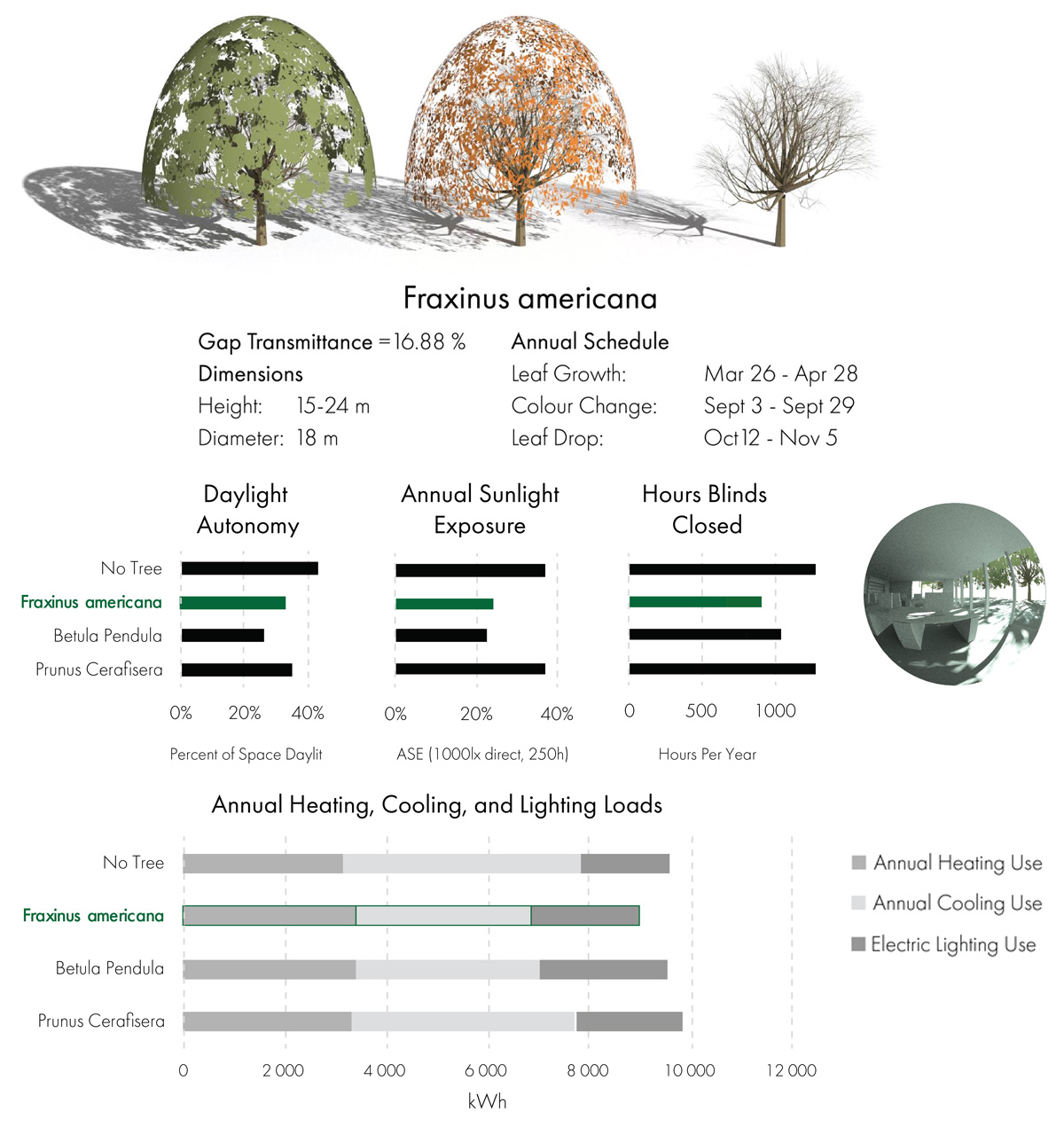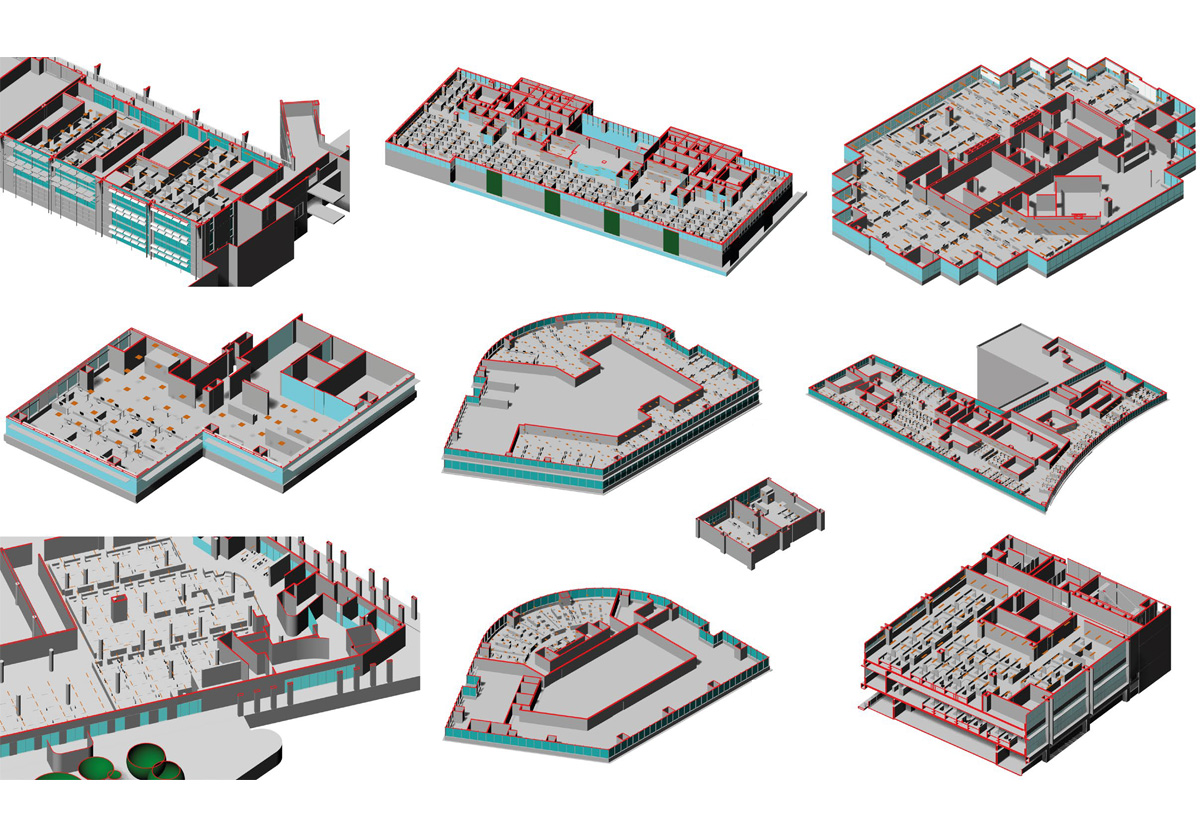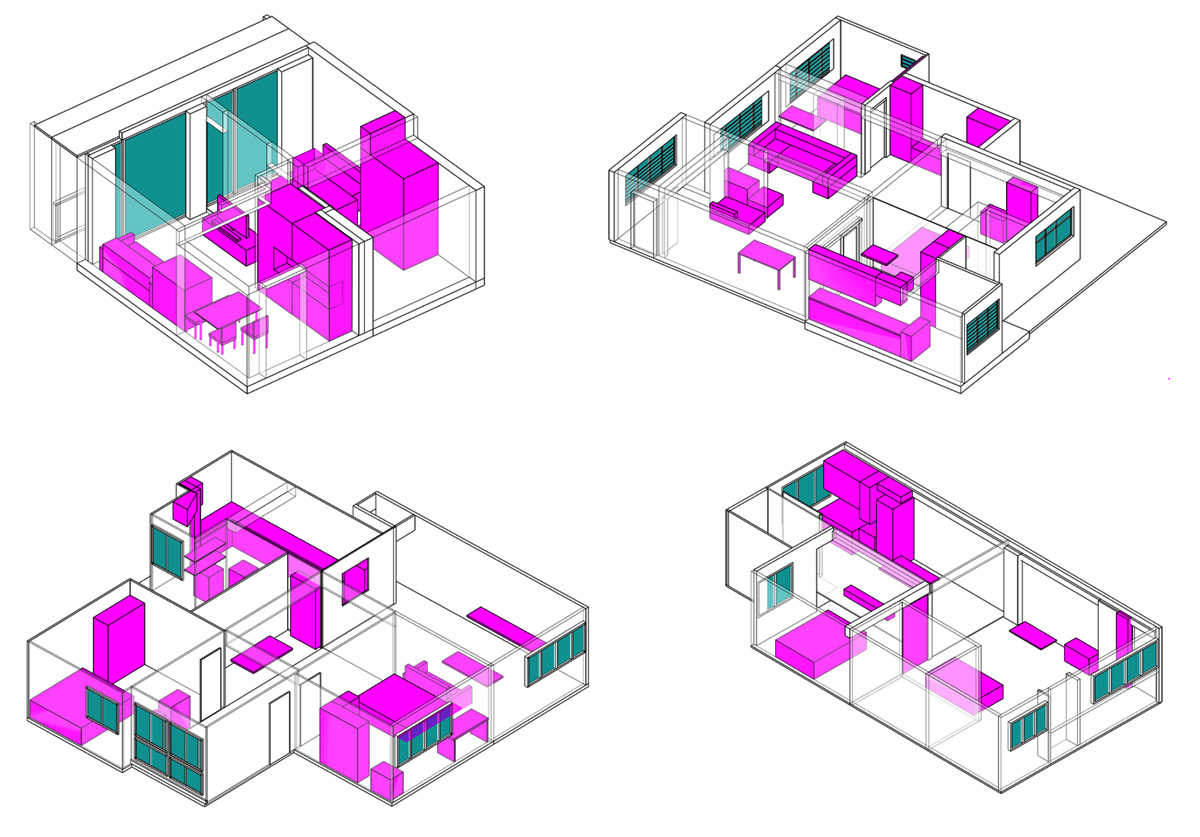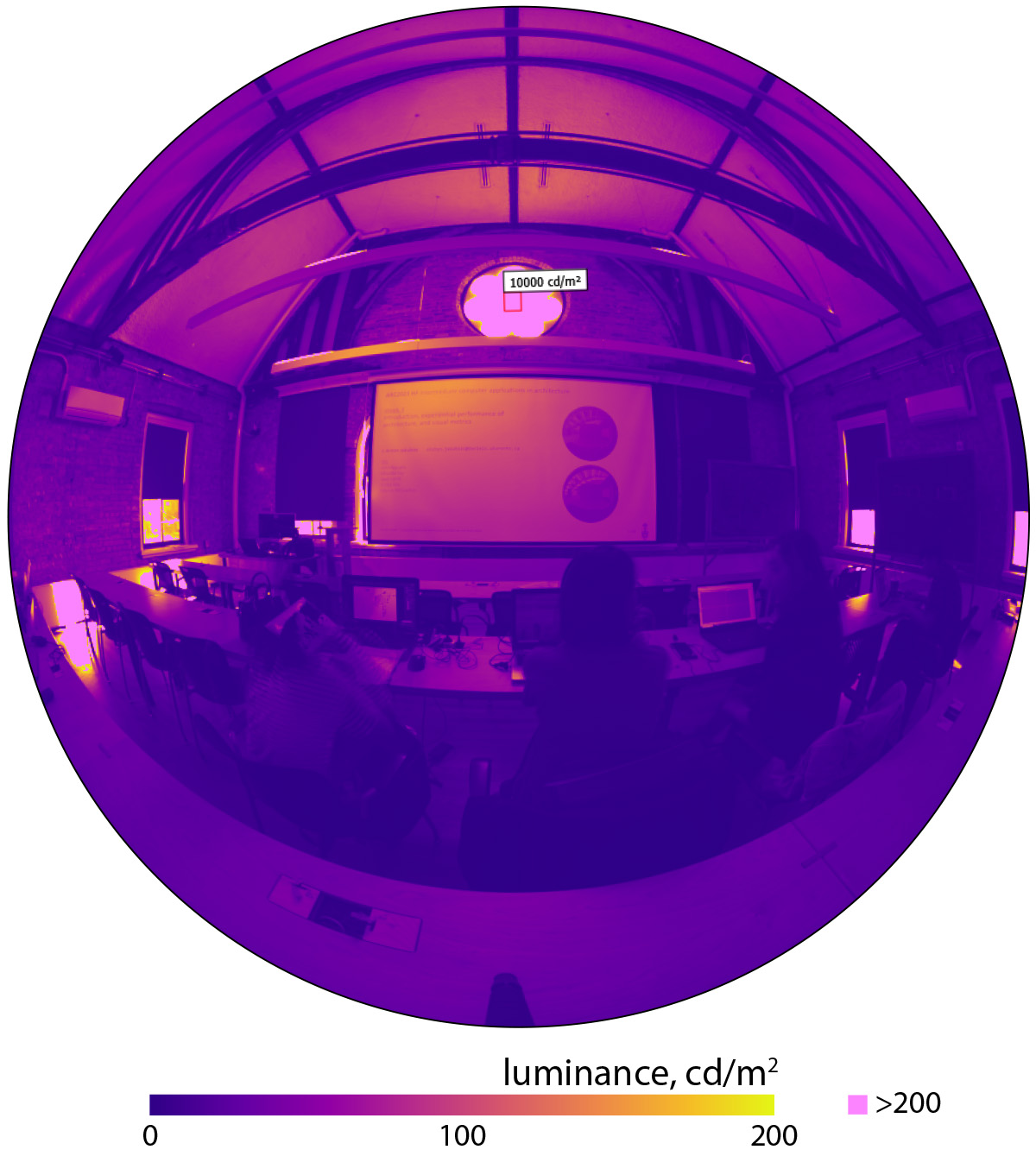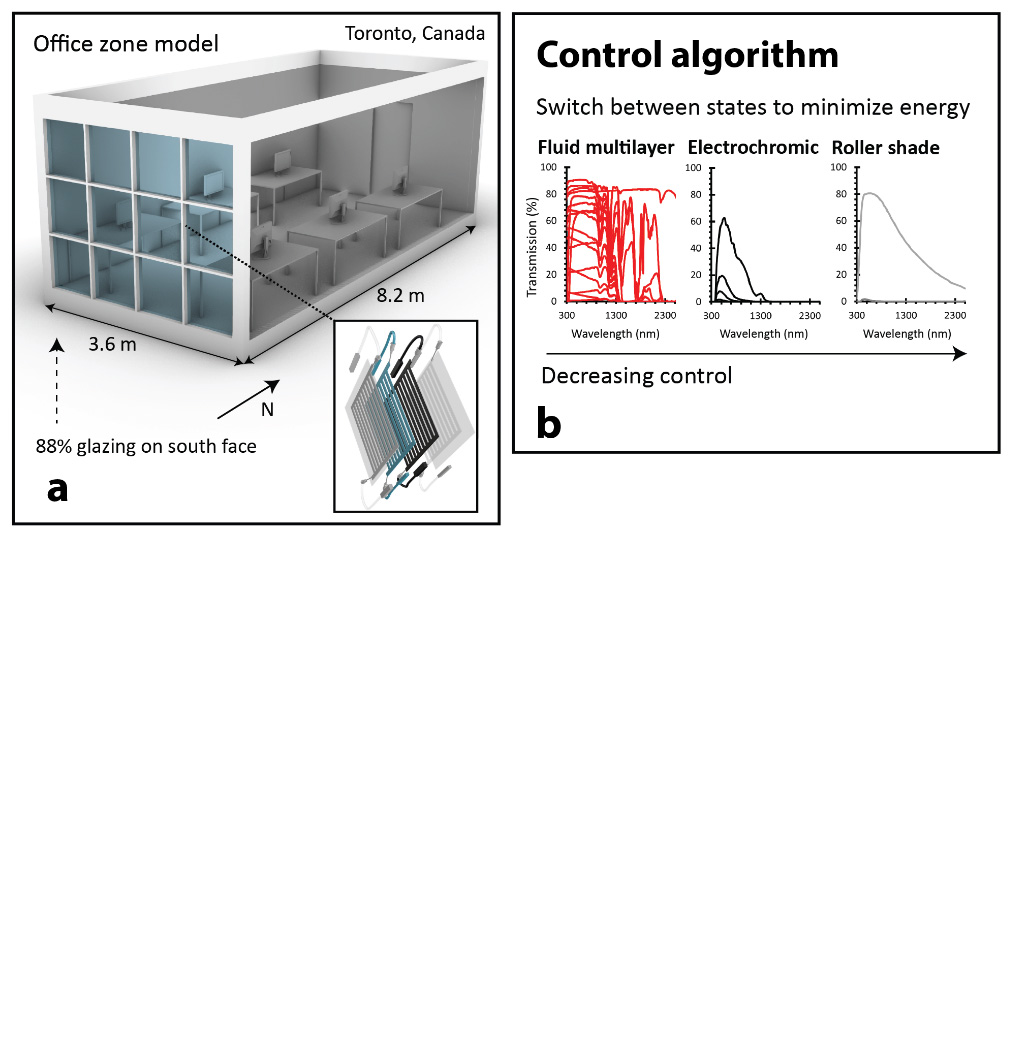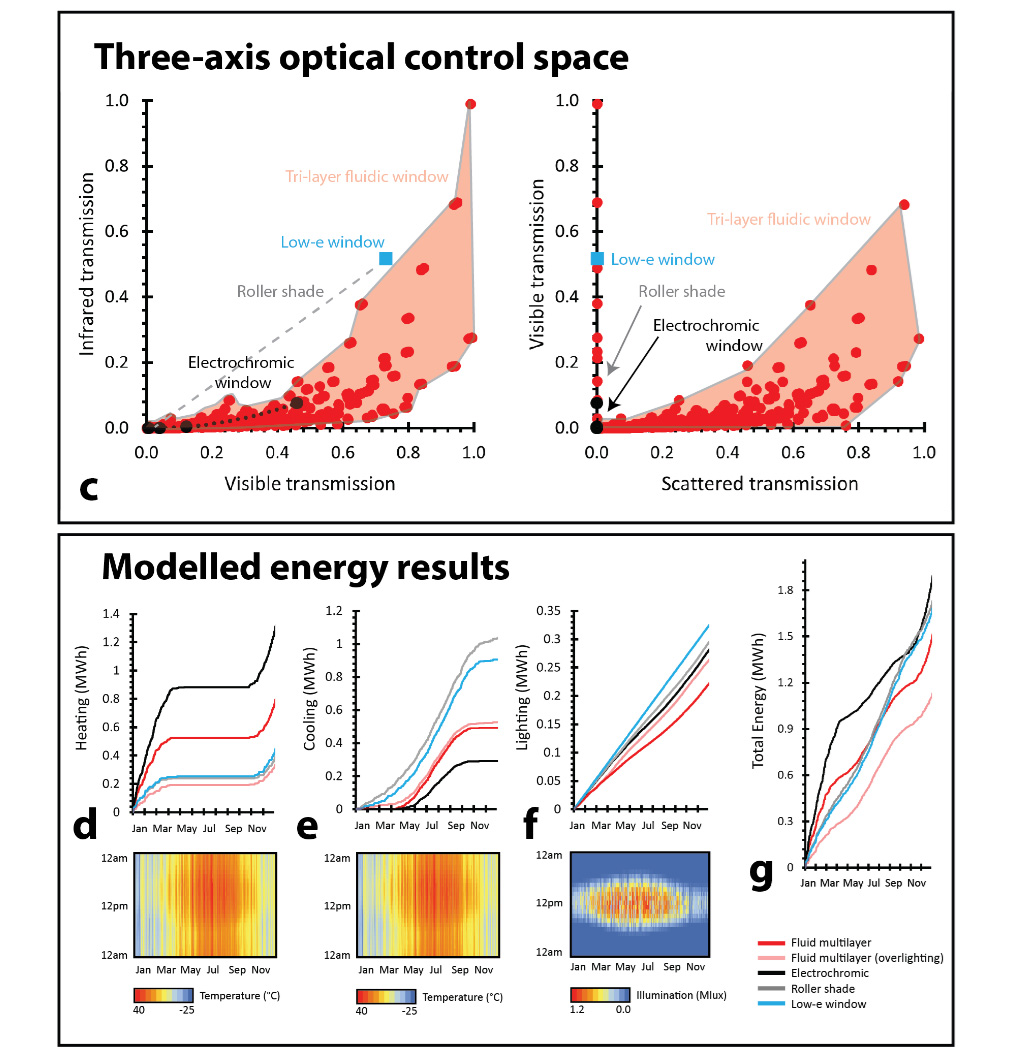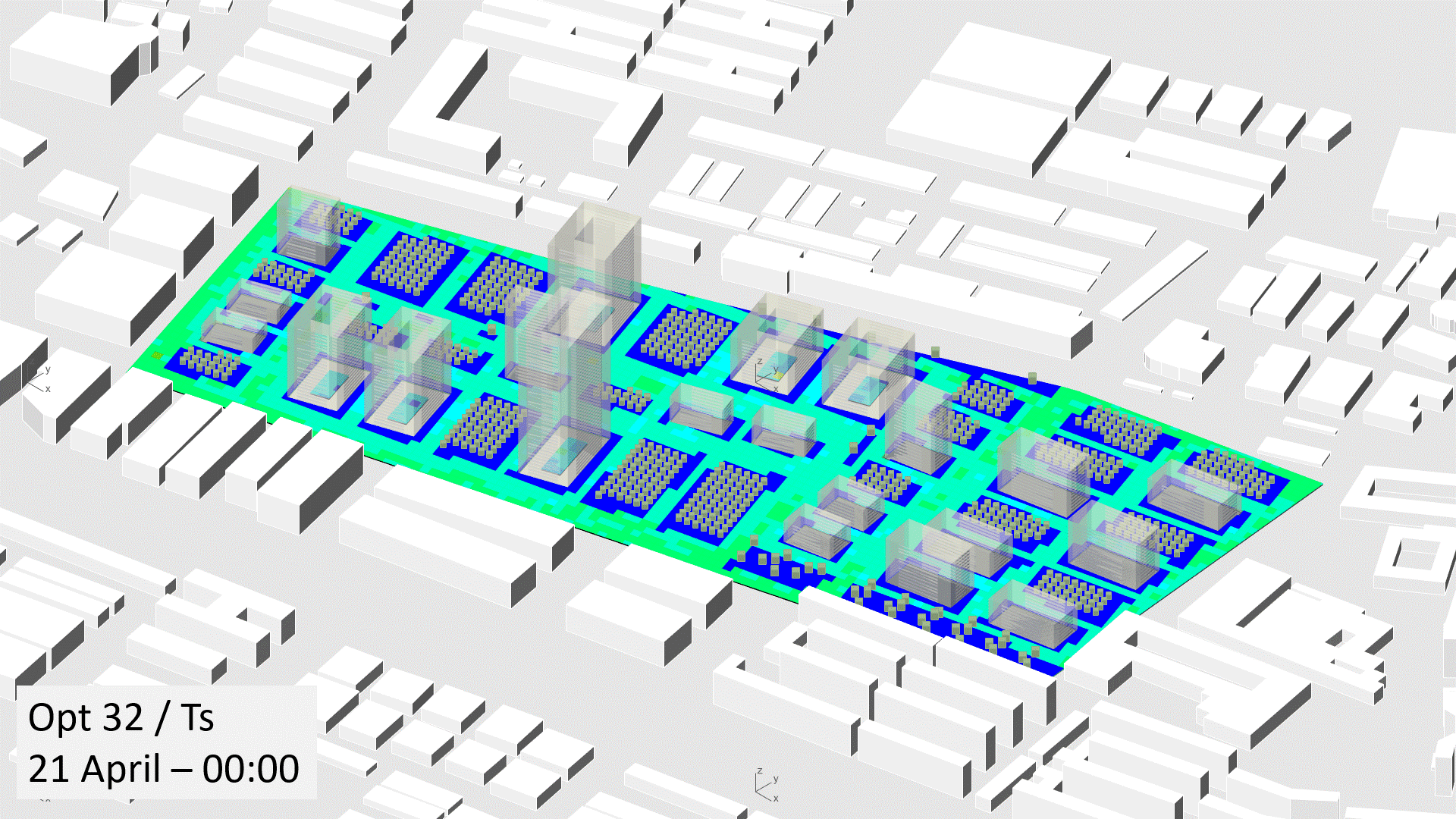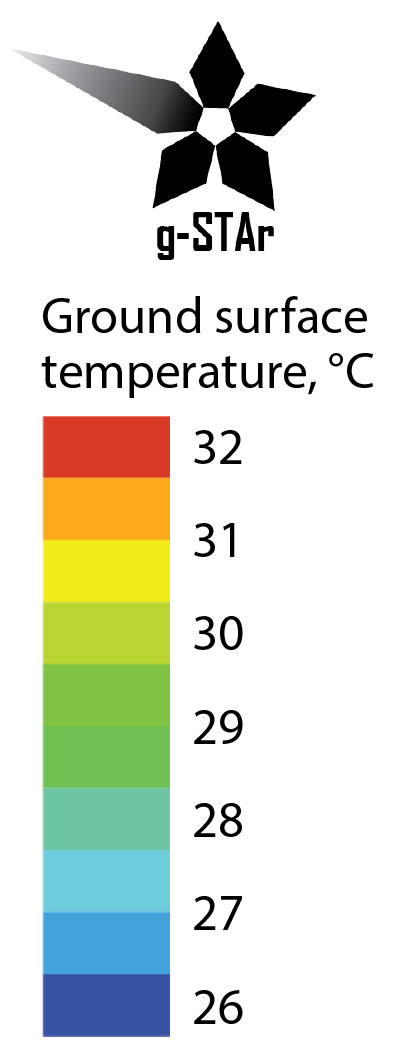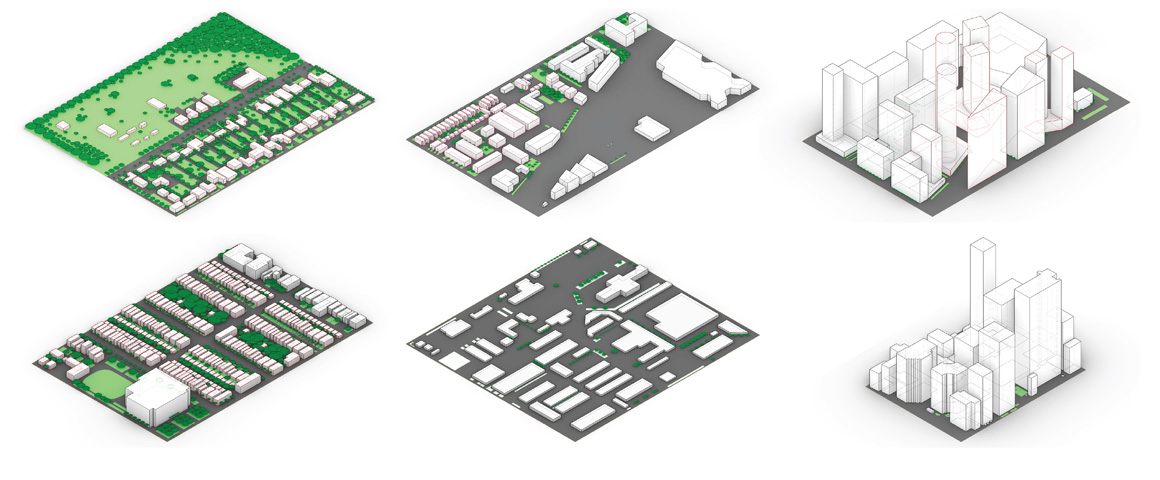Measuring and Simulating Trees
Trees in the built environment have many beneficial environmental functions: aesthetics, view quality, shade, urban cooling, and wind speed reduction. To accurately account for deciduous trees in daylight and energy simulation tools, we developed and validated repeatable measurement methods, geometry-generating tools, and new workflows to consider seasonal senescence.
Recent publications
Balakrishnan, P. & Jakubiec, J. A. (2022). Trees in daylight simulation – measuring and modelling realistic light transmittance through trees. Leukos (In press).
Pan, J. & Jakubiec, J. A. (2022). Simulating the impact of deciduous trees on energy, daylight, and visual comfort: impact analysis and a practical framework for implementation. In Proceedings of eSim: Ottawa, Canada.
Modelling Reality
Realistic performance simulation models support decision-making and analytical processes in existing buildings when continuous measurements are impractical. We use calibrated daylighting models combined with measured weather data to assess lighting quality and visual comfort over time. These results are combined with post-occupancy evaluations from building occupants to inform retrofits and novel, human-centric design metrics.
Recent publications
Quek, G. & Jakubiec, J. A. (2021). Calibration and validation of climate-based daylighting models based on one-time field measurements: Office buildings in the tropics. Leukos, 17(1), 75-90.
Jakubiec, J. A., Quek, G. & Srisamranrungruang, T. (2021). Long-term visual quality evaluations correlate with climate-based daylighting metrics in tropical offices–A field study. Lighting Research & Technology, 53(1), 5-29.
Kong, Z. & Jakubiec, J. A. (2021). Evaluations of long-term lighting qualities for computer labs in Singapore. Building and Environment, 194, 107689.
Light and Health / Nonvisual Effects
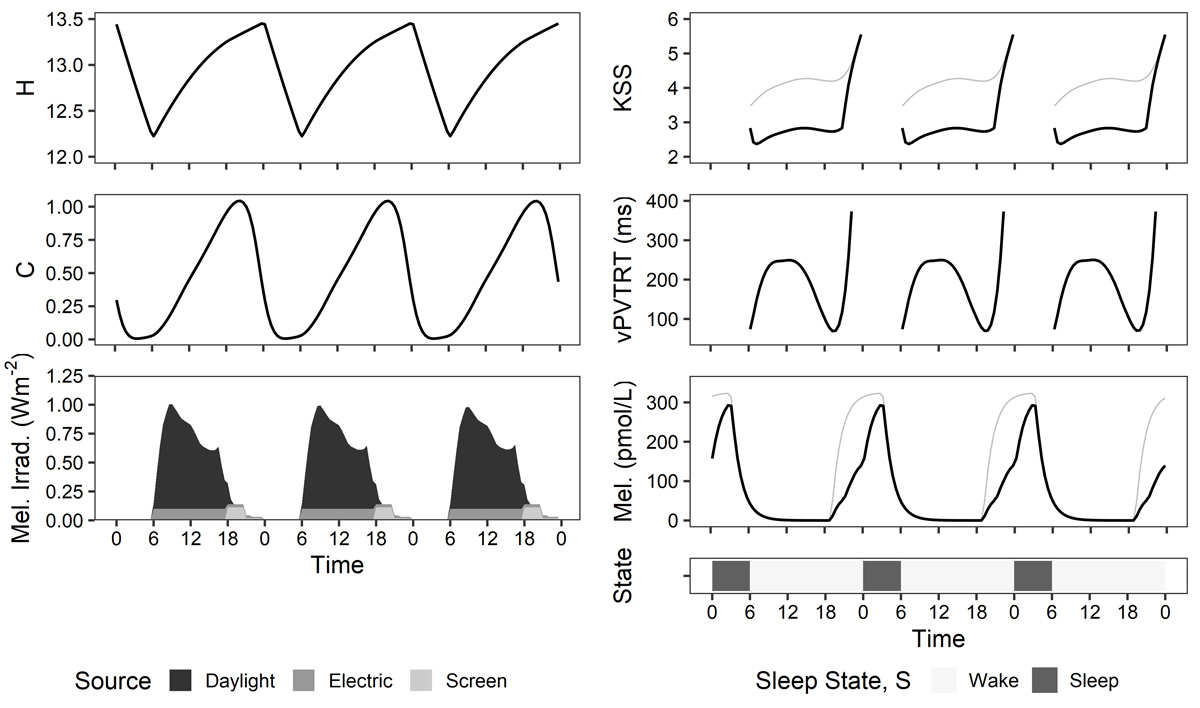
We are creating new workflows to simulate the non-visual effects of light on human health. Innovations being pursued are: climate-based spectral lighting calculations, accounting for behaviour and movement, and estimating direct photobiological effects. Our simulations demonstrate that lighting design characteristics can affect the timing, spectrum and intensity of light exposure—mediating circadian health, entrainment and subjective feelings of alertness.
Data-logging spectral irradiance sensors are being developed to inform patterns of light exposure and validate our simulation tools. Surveys are also being developed to understand the response to extreme daylight conditions for communities located far from the equator.
Recent publications
Alight, A. (2022). (Recording) Simulating circadian light and interpreting its results. At 20th International Radiance Workshop, Toronto, Canada.
Alight, A. & Jakubiec, J. A. (2021). Evaluating the use of photobiology-driven alertness and health measures for circadian lighting design. In Proceedings of Building Simulation 2021, Bruges, Belgium.
Jakubiec, J. A. & Alight, A. (2021). Spectral and biological simulation methods for the design of healthy circadian lighting. In Proceedings of Building Simulation 2021, Bruges, Belgium.
Visual and Thermal Comfort
A comfortable built environment is necessary to ensure that high-performance buildings function as designed while minimizing heating, cooling, and electric lighting energy. Occupant comfort is important in almost all of our projects. As part of almost all of our projects, we test visual comfort and thermal comfort through direct measurements, occupant feedback, and physically-based simulation tools.
Forthcoming book: Comfort and Perception in Architecture
Recent publications
Kent, M. G. & Jakubiec, J. A. (2021). An examination of range effects when evaluating discomfort due to glare in Singaporean buildings. Lighting Research & Technology, 14771535211047220.
Fluidic Facades
Buildings are a large energy sink, consuming almost one third of global energy. The generally static nature of windows means that central HVAC heating and cooling must compensate during fluctuating light and temperature conditions. In collaboration with Ben Hatton, we are developing active, fluidic windows modelled after systems found in nature. Our multi-layered window panel designs allow dynamic control of transmission, absorption and scattering of light. In simulations, we have demonstrated 75% savings on heating energy, 20% on electric lighting energy, and 43% on total operational energy compared to the best available electrochromic technology. With funding from the Climate Positive Campus at UofT, we are currently working to prototype full-scale active, fluidic windows.
Recent publications
Kay, R., Katrycz, C., Nitièma, K., Jakubiec, J. A. & Hatton, B. D. (2022). Decapod-inspired pigment modulation for active building facades. Nature communications, 13(1), 1-13.
Kay, R., Nitièma, K., Katrycz, C., Jakubiec, J. A., Hoban, N. & Hatton, B. D. (2022). Shape-programmable fluid bubbles for responsive building skins. Journal of Building Engineering, 48, 103942.
Urban Modelling
Using GIS tools and physics-based modelling techniques, we study the impact of the urban environment on outdoor comfort, ventilation, energy use, and daylight availability.
Recent publications
Lialios-Bouwman, V. & Jakubiec, J. A. (2021). Urban heat islands in future climate scenarios. In Proceedings of Building Simulation 2021, Bruges, Belgium.
Aydin, E. E., Jakubiec, J. A. & Jusuf, S. K. (2019). A Comparison Study of Simulation-Based Prediction Tools for Air Temperature and Outdoor Thermal Comfort in a Tropical Climate. In Proceedings of Building Simulation 2019, Rome, Italy.
ClimateStudio & ALFA

ClimateStudio and ALFA (and previously, DIVA) are commercial projects that sprung from academia. ClimateStudio is a cutting-edge tool for climate analysis, physics-based daylight simulations, and early-design-phase energy modelling. ALFA is the first commercially available tool for full-spectrum simulation of lighting for circadian health effects. The tools are now used by 1000's worldwide and are taught in over 400 schools of architecture and engineering. Much of the work developed in the Design for Climate and Comfort lab is later implemented in practice through ClimateStudio and ALFA.
